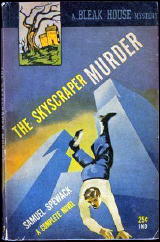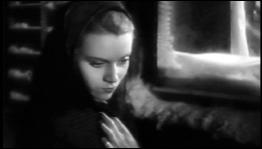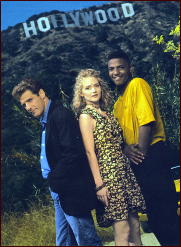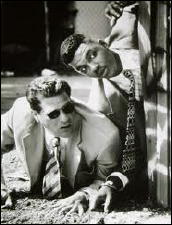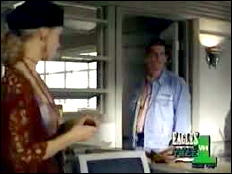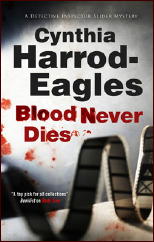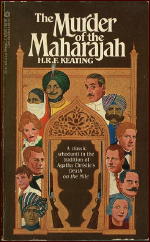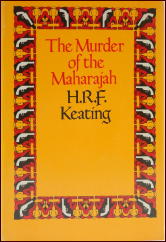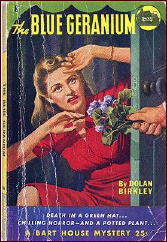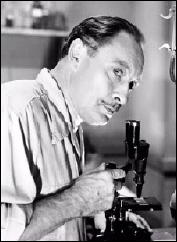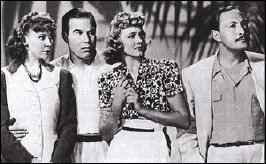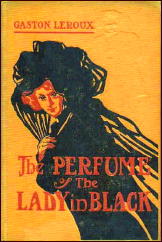CONVENTION REPORT: PulpFest 2013
by Walker Martin
During the dates of July 25-July 28, 2013 an event happened in Columbus, Ohio, that may have been not important to non-pulp and non-book collectors, but if you collect and read these great artifacts then you know that something very special occurred. I attended almost 40 pulp conventions when the old Pulpcon was the big summer event during 1972-2008. And as much as I loved that pulp convention, it never reached the heights of the present show which we call PulpFest. The most attendees that Pulpcon ever had was around 300 and many of the events had around 100 or so. But all five of the recent PulpFests have had higher attendance than Pulpcon ever had. Once again the attendance reached 400 with 100 dealer’s tables.

Yes, it is hard to believe but this was the fifth convention of the new pulp convention. And as a special reward to the attendees, it was one of the very best shows. If you read or collect pulps, pulp reprints, books, vintage paperbacks, slicks then this was the place to be. If you like old movies or collect original art from books and magazines, then you were in luck because there were plenty of dvds and art for sale.
As usual, I had been thinking of this convention ever since the Windy City Pulp Convention ended in April. I’m severely addicted to reading, collecting, and buying all sorts of books and magazines and I needed another fix. I also collect dvds of old movies and original artwork, so non-collectors simply do not understand me at all. They tend to call me everything from hoarder to that crazy guy who likes to read. Actually it is impossible for the non-collector and non-reader to ever understand the collector, so the best policy is to ignore the poor ignorant fools.
If you do not read or collect anything then you better stop reading this report because it will freak you out. Most of the 400 attendees were addicts like me and they were out to collect and buy books and magazines come hell or high water. One collector actually took an Edd Cartier artwork out of my hands while I was looking at it and yelled “I’ll buy it!”
Another time a collector beat me again to a pulp cover painting and I was consumed with feelings of jealousy and hatred. The only thing that stopped me from trying to yank it out of his hands was the fact that he was a lot younger than me and could pound me into the floor before I made my getaway.
It’s a pulp jungle out there as Frank Gruber once said, and every man for himself. Since I couldn’t sleep the night before, I got up at 4:00 am and waited for the van to arrive. For the last several years, a group of us have been renting a van and driving out from NJ. We have to rent a van because a normal car will not hold all our acquisitions.
Only veteran, long time collectors are allowed in this van and you have to have a thick skin because we are prone to joke and laugh at each other. We even use insults in order to try and get an advantage over each other. Once again to pass the time we talked about bizarre and crazy pulp collectors that we have known.
I recounted the story of a friend who wanted to steal art from the art display and another friend who picked up girls by leering and saying “the mole men want your eyes”. It seemed to work, but I never tried it because all I’m interested in at the pulp conventions are books, pulps, and original art. Everybody can have sex, but to hell with it during the pulp convention!
After nine hours of driving we arrived in Columbus at 3:30 pm. We quickly checked in and once again I marveled at the size of the hotel and convention center area. I got lost more than once. Maybe that’s a result from all the years that I’ve spent alone in a room happily reading. That’s my ideal of a good time: reading a good book.
Since Ed Hulse, our driver, was giving a lecture at Ohio State’s Thompson Library, we went with him to listen to him talk about the ancestors of Batman. For an hour and a half he discussed the various pulp crime-fighters. Eric Johnson, a professor at Ohio State, drove us over to the Library. He has organized these annual lectures each year during PulpFest and this one was especially enjoyable.
We then registered for the convention and set up our tables. The panels discussed the influence of Fu Manchu and Hollywood and the Hero Pulps. Following the panels, we watched the first five chapters of THE SPIDER’S WEB. Starring Warren Hull and Iris Meredith, this has never been commercially released but is available on the bootleg market.
In my opinion, this is one of the very best serials ever made. It faithfully follows the spirit of the Spider novels and is non-stop action. We saw five chapters each night for three evenings. My favorite scene involves a little old lady in a dress fighting the Spider. I know it’s a henchman but the scene is funny as hell seeing a woman in a dress and white wig fighting the Spider. I guess the Spider didn’t think it was funny because when the little old lady tried to run away from him, he calmly shoots her in the back. I almost had an accident laughing. One of the great scenes in movie history. I guess the movie code censors didn’t preview THE SPIDER’S WEB because they would have demanded the scene be cut. The poor little old lady. I loved it!
I mentioned the competition between collectors above. Sometimes it can misfire. For instance when the collector took the Cartier drawing away from me, I was very jealous. He paid more than it was worth at $450 but I was still unhappy. But the next day I found si more Cartier drawings, each priced at only $160 each plus they were signed!
Needless to say, I took great enjoyment in showing my friend that he had overpaid about $300. I was happy to see that he was crushed and I took advantage of his sadness to eagerly push ahead of him and buy some pulps. It’s true that we have been friends for 40 years but we are talking about our collections here! It’s dog eat dog!
Next to the dealers room I noticed hundreds of women shrieking and yelling at another convention. It seem to involve baskets and shopping. In fact one lady on the elevator asked me if I had found any good shopping bargains. I quickly told her, with a superior air, that I was a member of the PulpFest convention. She asked with great puzzlement “What’s Pulpfest?”
Since I only had something like 15 seconds on the elevator to explain, I simply muttered it was a convention of book collectors. She repeated in a tone of wonderment “book collectors?” As I said, the non-collector will never understand the collector.
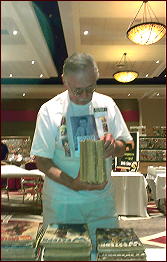
Now, you might wonder what I brought to sell and what I bought for my own collection. Recently I was lucky enough (or perhaps a non-collector would say *unlucky enough*), to obtain over 1,000 issues of WESTERN STORY MAGAZINE, 1919-1949. I already had almost all the issues but I wanted a few wants plus I’m always looking for upgrades. So I passed many of the Max Brand issues on to a friend, but that left me with many duplicates. So I boxed up a couple hundred issues, mainly 1936-1939 and priced them at only $5 each. The 1920’s I wanted $15 each but it was amusing to watch the many collectors walk by perhaps the biggest bargain in the dealer’s room, sneering at WESTERN STORY issues priced at only $5.
However, there were a few who realized that I may have taken leave of my senses and bought all the issues I had before I was committed to the local insane asylum. I’m talking about fellow out of control collectors like Matt Moring, David Saunders, and Randy Vanderbeek. These guys know a bargain when they see it! By the way, I’ll try and remember to forward a photo of me looking at the WESTERN STORY’s on my table.
I also sold several cancelled checks from the files of Popular Publications and Munsey. Again, there are a few collectors that know these are extremely rare and unusual.
What did I buy? The best and rarest item was a bound volume of a magazine called ROMANCE. Despite its name it was not a love pulp and during its short life of only 12 issues in 1919-1920, was the companion magazine to the great ADVENTURE MAGAZINE. I’ve been hunting for decades for this title and have only found three or four issues. This volume contained six of the 12 issues and made me very happy. Next to it was the crazy magazine THE SCRAP BOOK, so I bought the those volumes also.
I also bought 24 issues of various crime digests, the ones that tried to imitate MANHUNT in the 1950’s. I used to have these issues but since they are quite unreadable, I sold them years ago. If a collector lives long enough, he often will start collecting items that he previously sold. The covers are nice, showing all sorts of violence against women. Sorry ladies, but digest and pulp collectors seem to like these covers and they bring high prices. I’m talking about such crime digests as TWO-FISTED TALES, OFFBEAT, GUILTY, KEYHOLE, and WEB TERROR.
I also bought several issues of GHOST STORIES. Despite the claim that these are true stories, they really are fiction. Since I’ve been at the collecting game so long, I’ve filled in most of my wants but I did manage to find a DIME DETECTIVE I still needed. Also an FBI DETECTIVE and a DETECTIVE STORY from 1922.
I bought several pieces of pulp art in addition to the six Edd Cartier drawings, such a Kelly Freas paperback cover painting and other things too numerous to name. But I do want to mention the Walter Baumhofer art that David Saunders had at his table. He had something like a hundred pieces of art that may have been used as interior illustrations in various pulp magazines. They all eventually sold and I managed to buy many of them. David threw in a great photo of Baumhofer.
Speaking of David Saunders, I would like to like to discuss the various panels and discussions, but there were too many for me to cover here. Pulpfest.com has a complete listing but I would like to mention two that I found to be of great interest. They all are interesting and that is another thing that Pulpfest is known for. The excellent quality of the evening programming. But my two favorites were the presentation that David Saunders gave on Walter Baumhofer and the talk that Chris Kalb gave on hero pulp premiums and promotions.
David Saunders, as the son of artist Norman Saunders, knew Walter Baumhofer. There is no one better qualified to talk about Baumhofer. What a great discussion, and I hope PulpFest has David Saunders talk about pulp artists at every convention. David has one of the best websites on the internet where he discusses pulp artists. The site is pulpartists.com. The committee already have invited Chris Kalb back to give us additional information about the pulp premiums.
The auction was mainly from the collection of Al Tonik and this time concentrated on the research books that Al had accumulated over the years. I also buy reference books as they are published so I had almost all of these items.
Several pulp reprints and books about the pulps made their debut. WORDSLINGERS by Will Murray, THE BLOOD n THUNDER GUIDE TO PULP FICTION by Ed Hulse, HIDDEN GHOSTS by Paul Powers, a collection edited by Laurie Powers, PAPERBACK CONFIDENTIAL: Crime Writers of the Paperback Era by Brian Ritt, and from Altus Press, THE COMPLETE ADVENTURES OF HAZARD AND PARTRIDGE by Robert Pearsall with an excellent and long introduction by pulp scholar, Nathan Madison. We really do live in the golden age of pulp reprints and reference books.
Tony Davis retired as the editor of THE PULPSTER last year but this year the new editor, William Lampkin, carries on the tradition by editing a fine collection of articles. My favorite is the piece on Daisy Bacon by Laurie Powers.
The Munsey Award was given to pulp scholar and anthologist, Garyn G. Roberts. Congratualtions Garyn, you really deserve this recognition.
OK, there must be something I can complain about, right? Nope, no drunks giving me a sour look, no complaints about the lighting in the dealers room, no bitching about the hospitality room. I just went to the bar on the second floor and acted like a collector. All the non-collectors gave me plenty of space!
So, I would like to thank the PulpFest committee for all their hard work. Mike Chomko, Jack Cullers, Ed Hulse, and Barry Traylor. Thank you, thank you!
And to all you collectors and readers out there. Make plans for PulpFest next year. Do it now and no excuses accepted! Even if we die, we can haunt the place.
